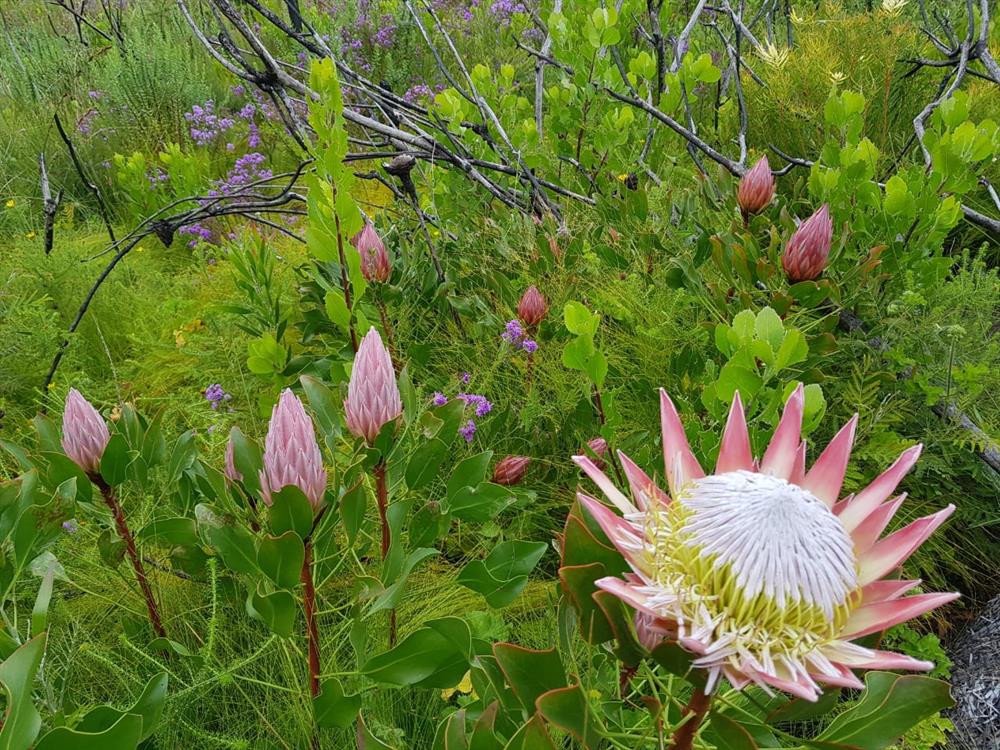KNYSNA NEWS - A recent survey throughout the Knysna burn scar showed there is very positive indigenous plant regrowth throughout the landscape.
So says Cobus Meiring of the Southern Cape Landowners Initiative (SCLI), adding, "With favourable rains in the Knysna area, coupled with an early spring and longer daylight hours, fynbos is making a strong comeback. Known to be dependent on cycles of wildfire for regeneration, the fynbos no doubt benefitted from the 2017 Knysna fire disaster.”
Chased by extremely strong winds and fuelled by the dense invasive alien biomass littering the countryside, the intensely hot wildfire left only barren sand in its wake, in terms of vegetation, and there were serious concerns that the fynbos seed bank, hidden in the topsoil, might have been completely destroyed, along with vital nutrients and insect life.
According to Meiring, a further concern was that denuded landscapes would be completely covered by a wave of invasive alien plants, which are known to outcompete indigenous plants, such as lowland fynbos.
"The herbicide assistance programme rolled out on selected properties by the Southern Cape Fire Protection Association (SCFPA), and sponsored through Nedbank and WWF SA, provided assistance to the respective landowners to very effectively stem the growth of invasive alien plants, allowing indigenous plants to flourish," says Meiring, adding, "In addition, the fire gave landowners a clean slate in terms of vegetation types on their land, and an opportunity to gain the upper hand in dealing with invasive alien plants such as wattle, blackwood and rooikrans.


More info: www.scli.org.za.
Article: Staff reporter
'We bring you the latest Knysna, Garden Route news'
















